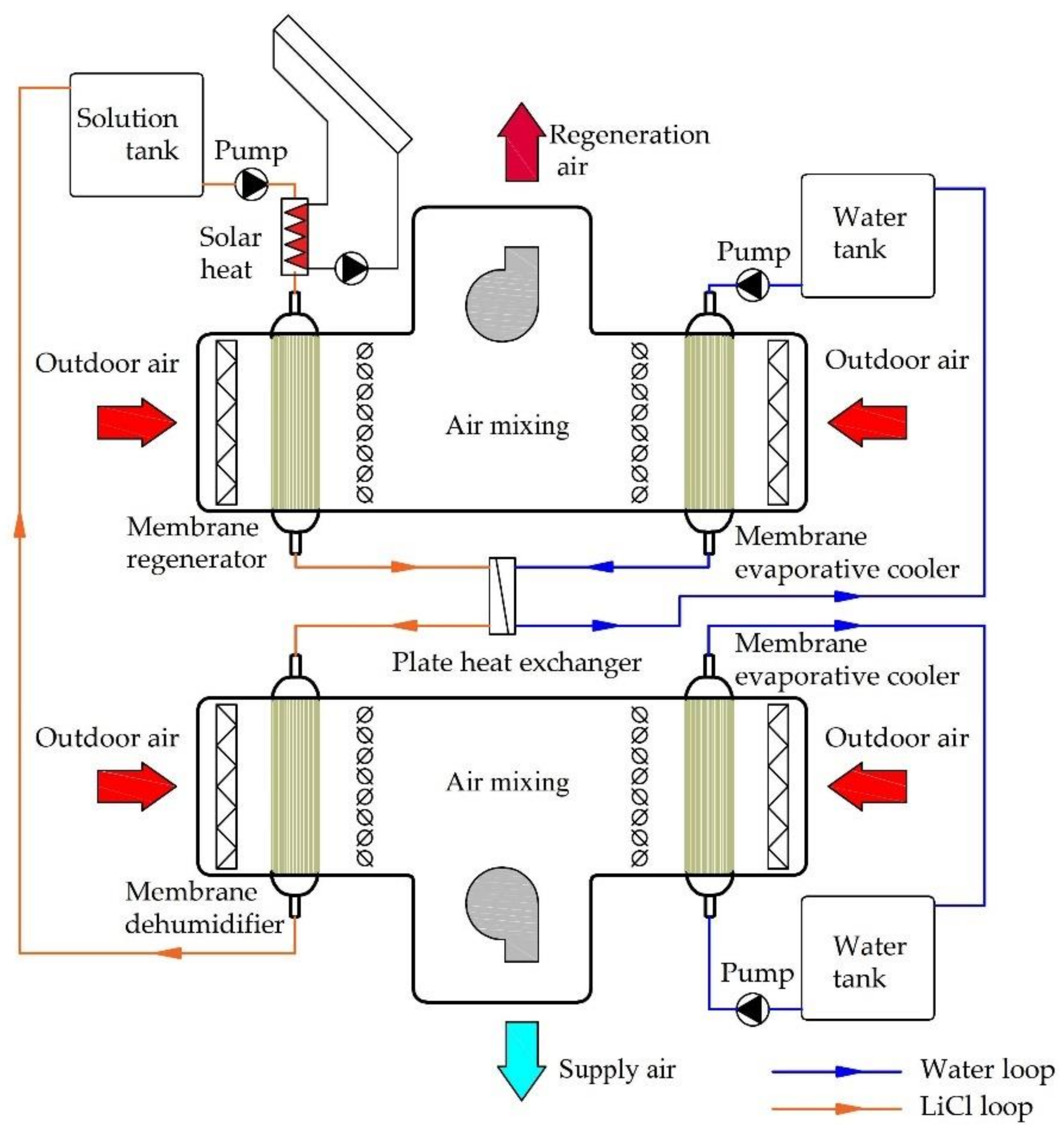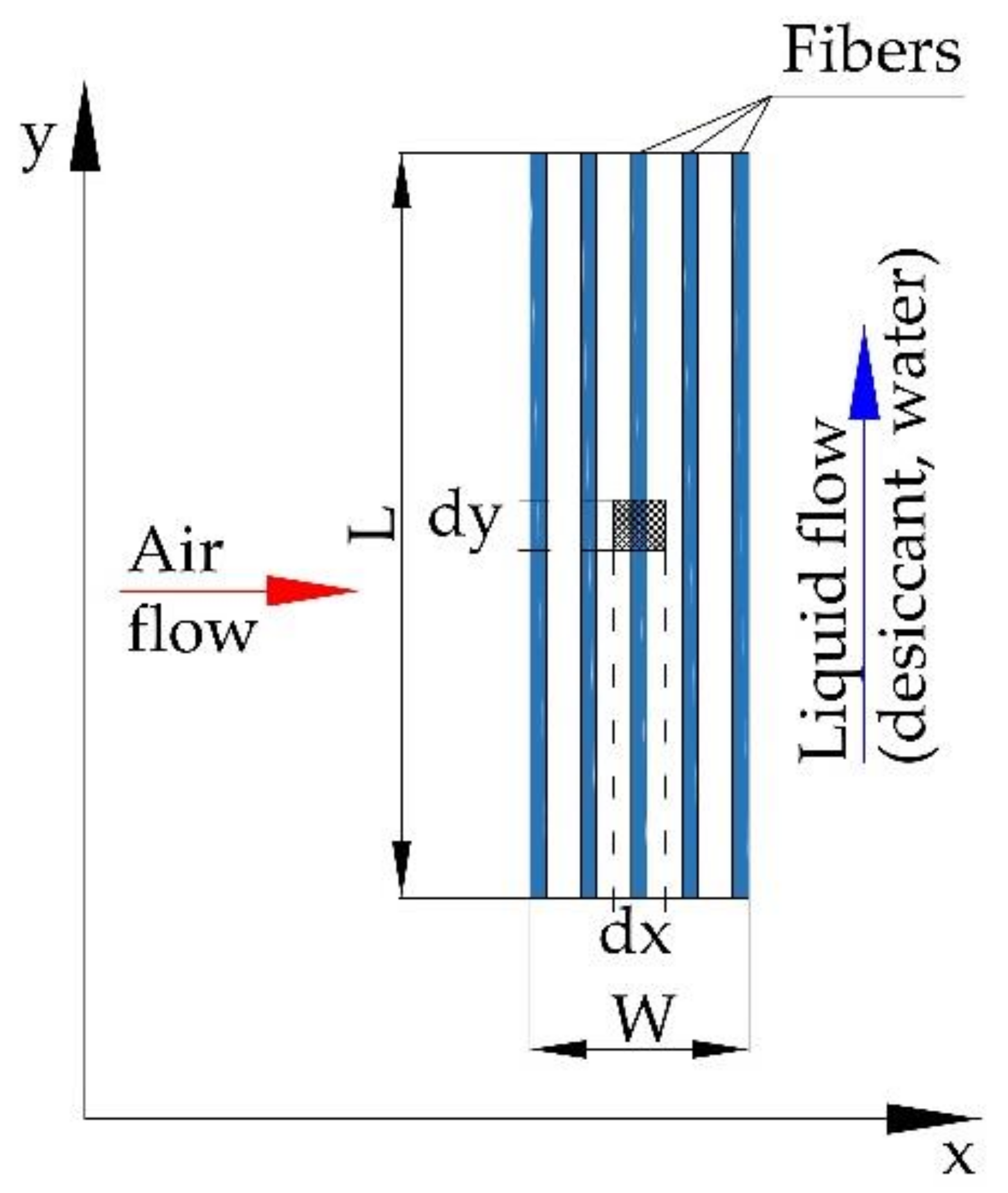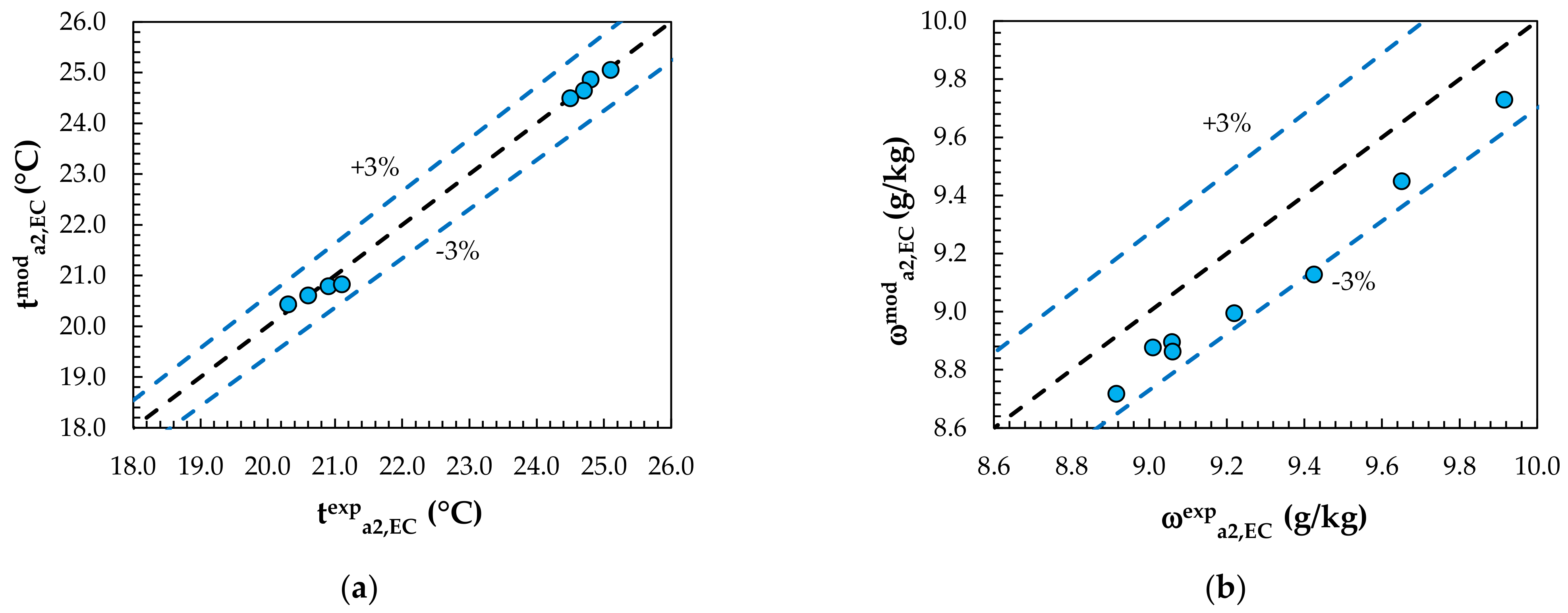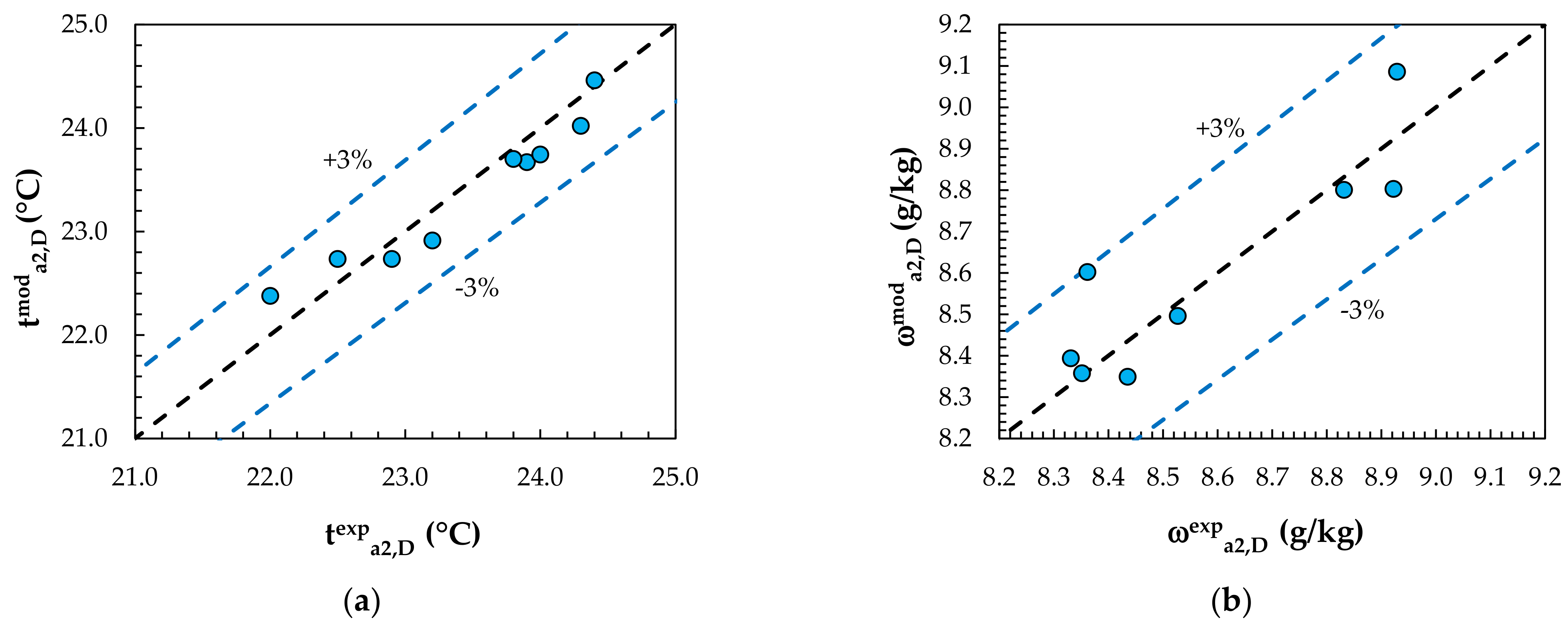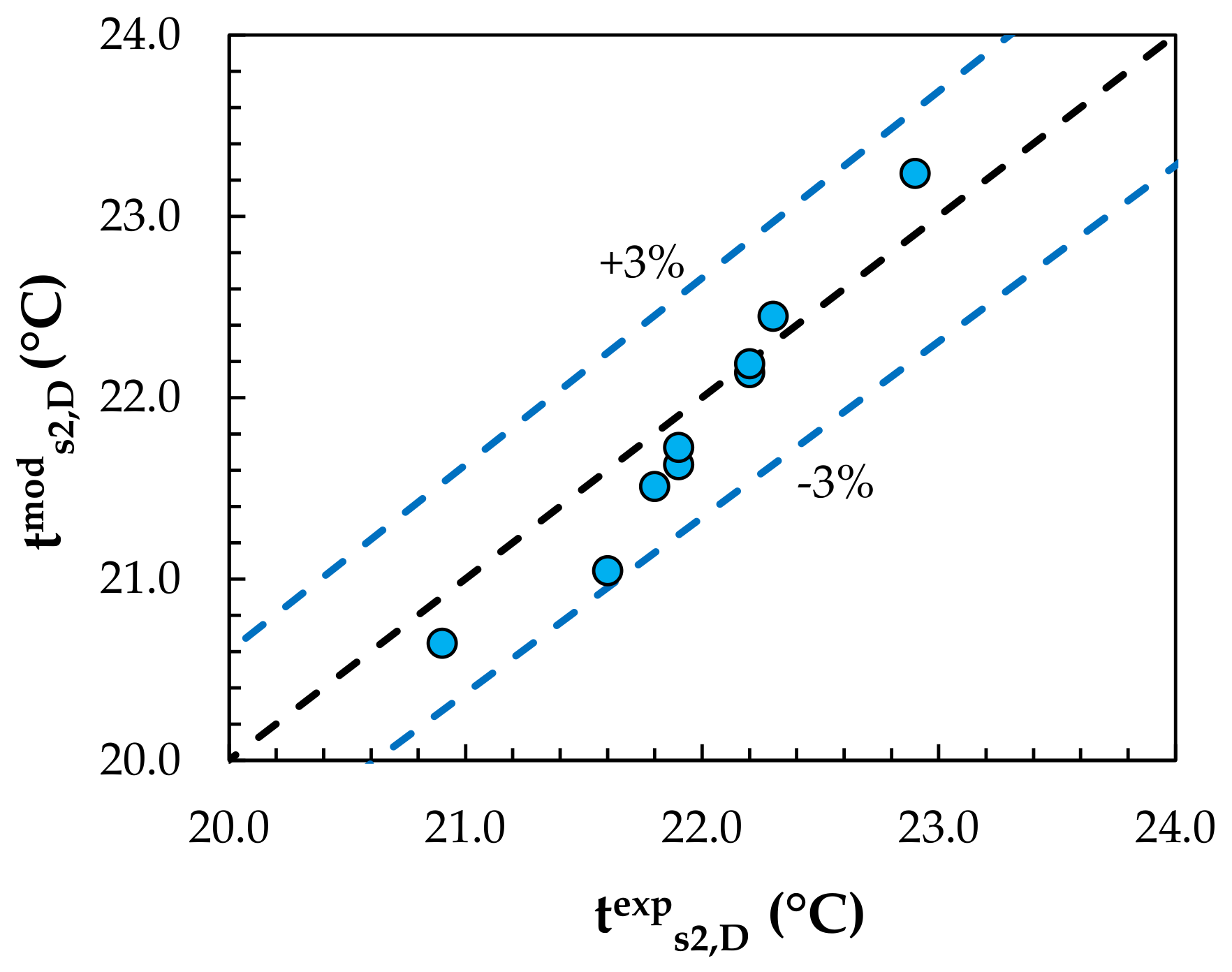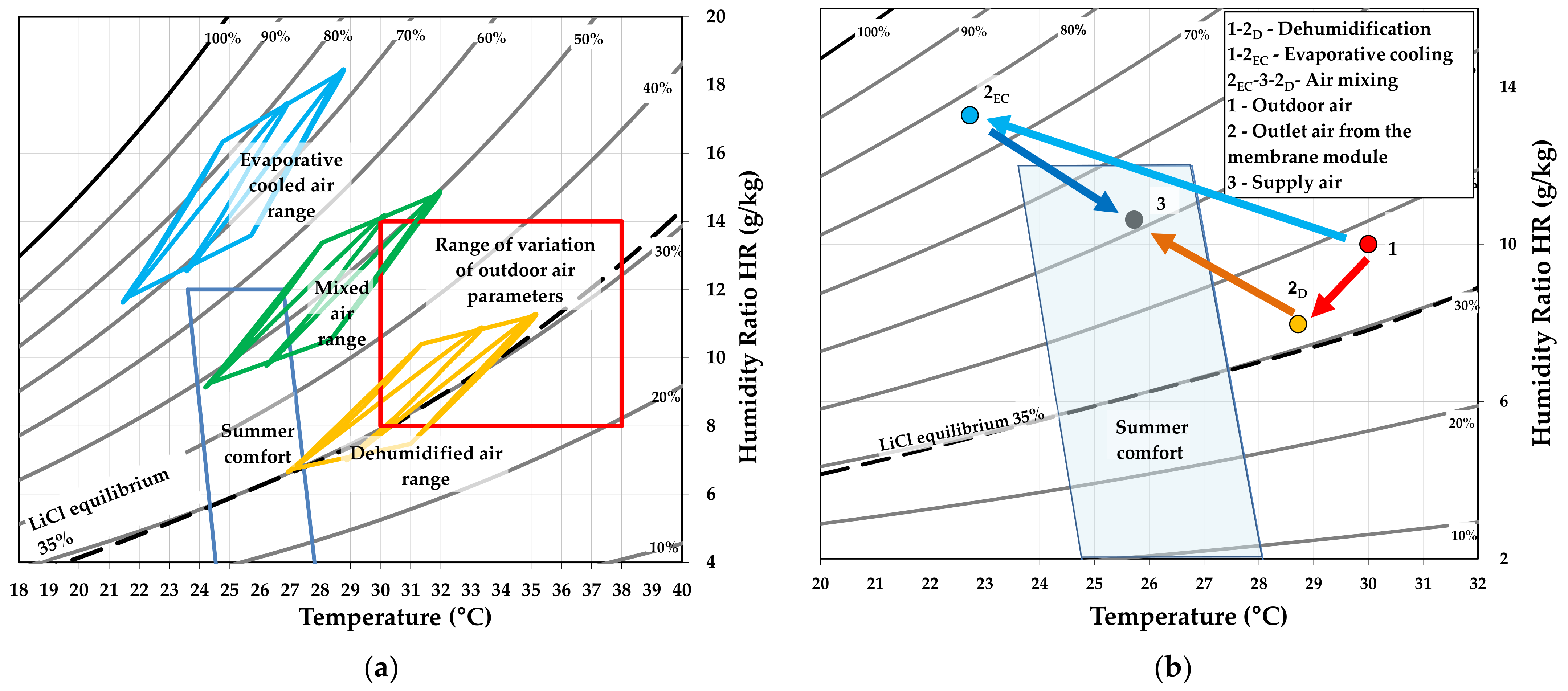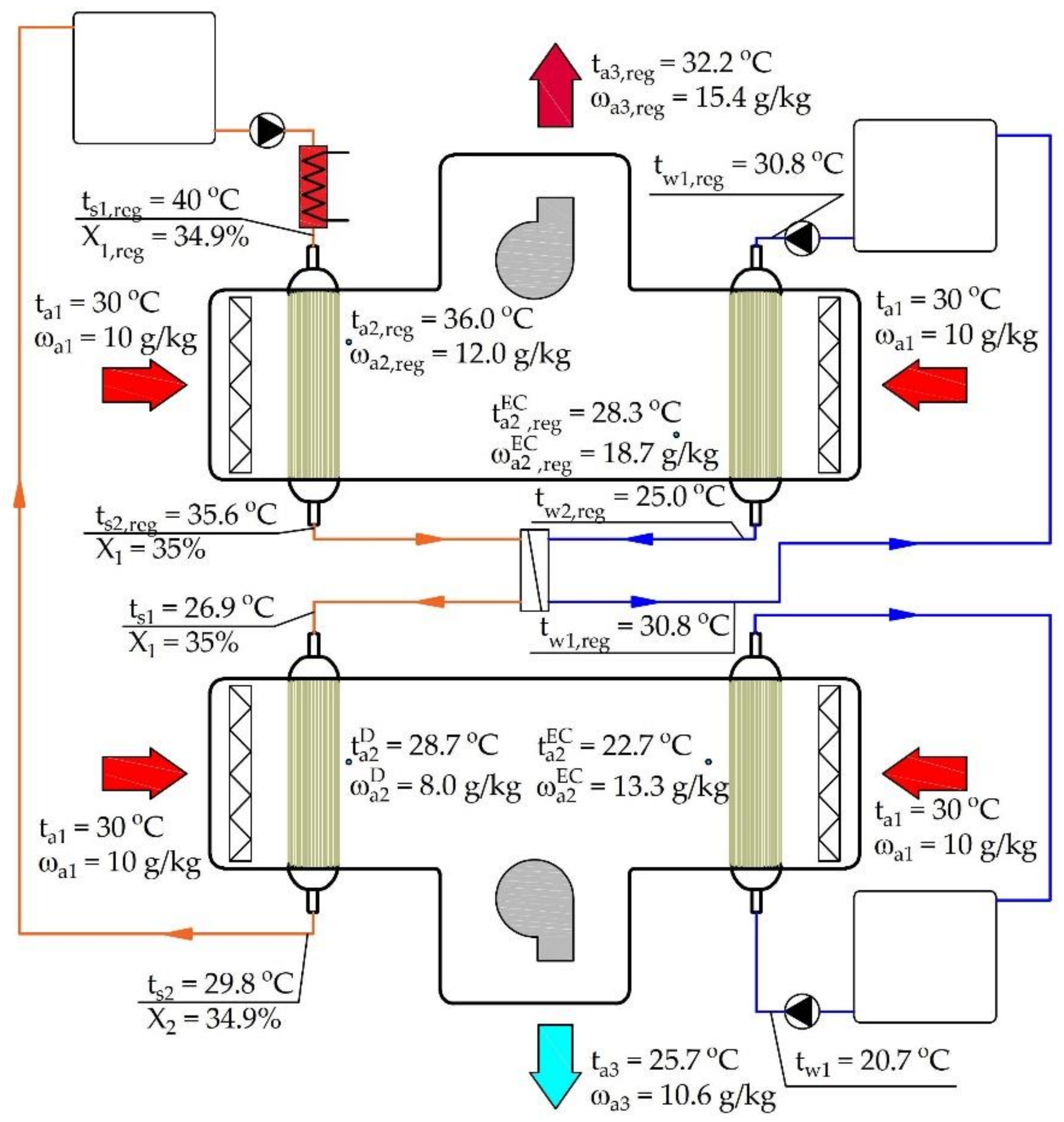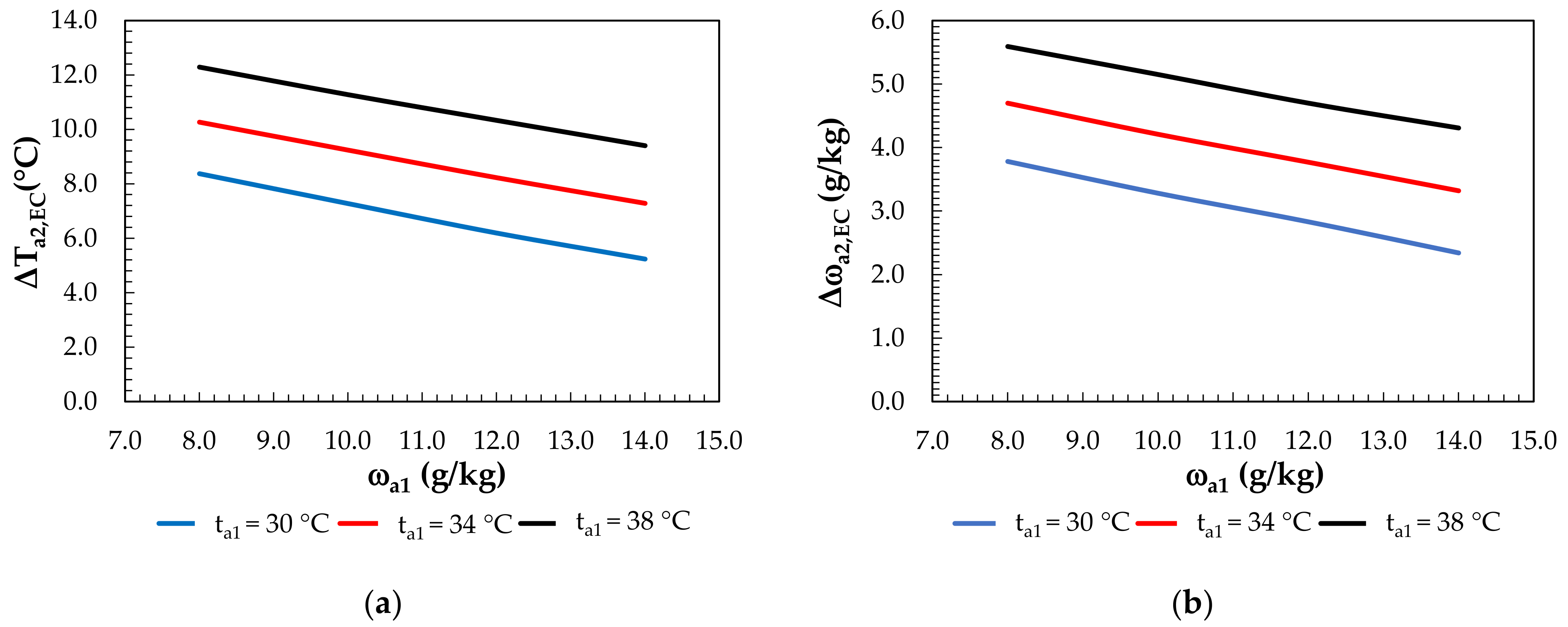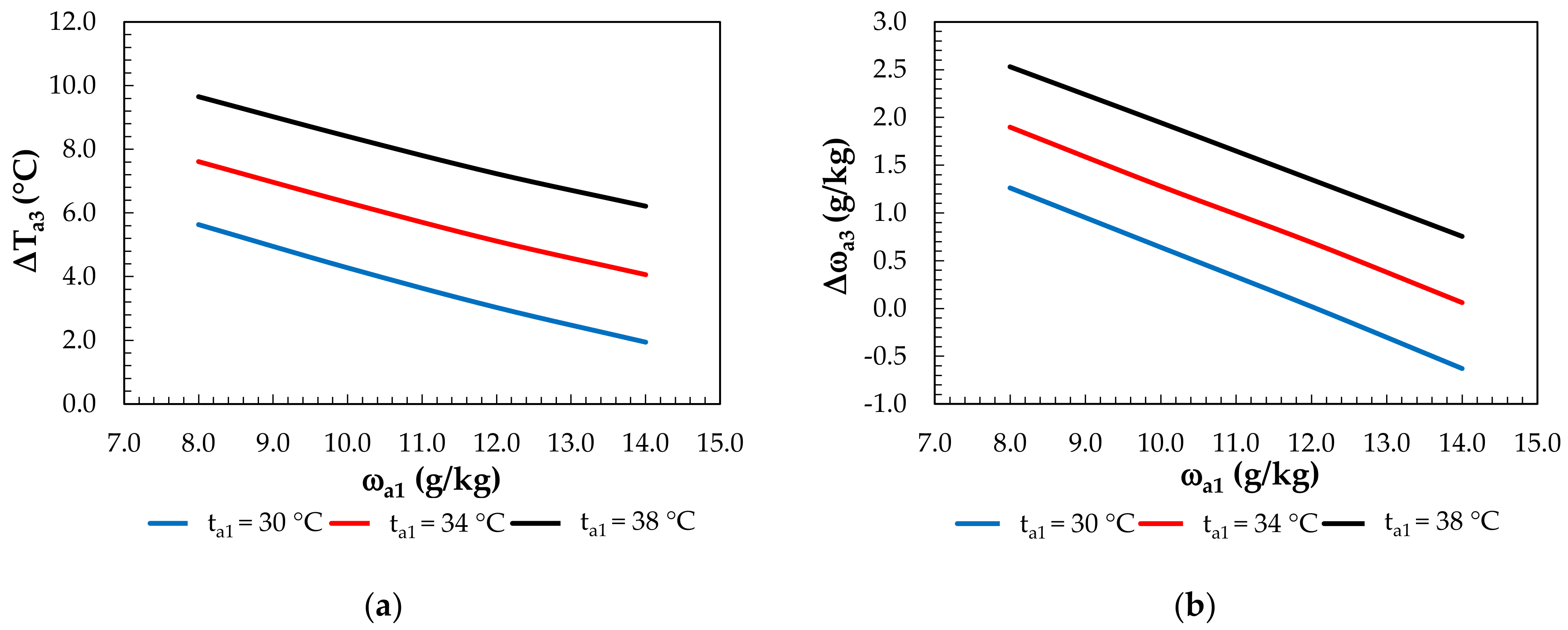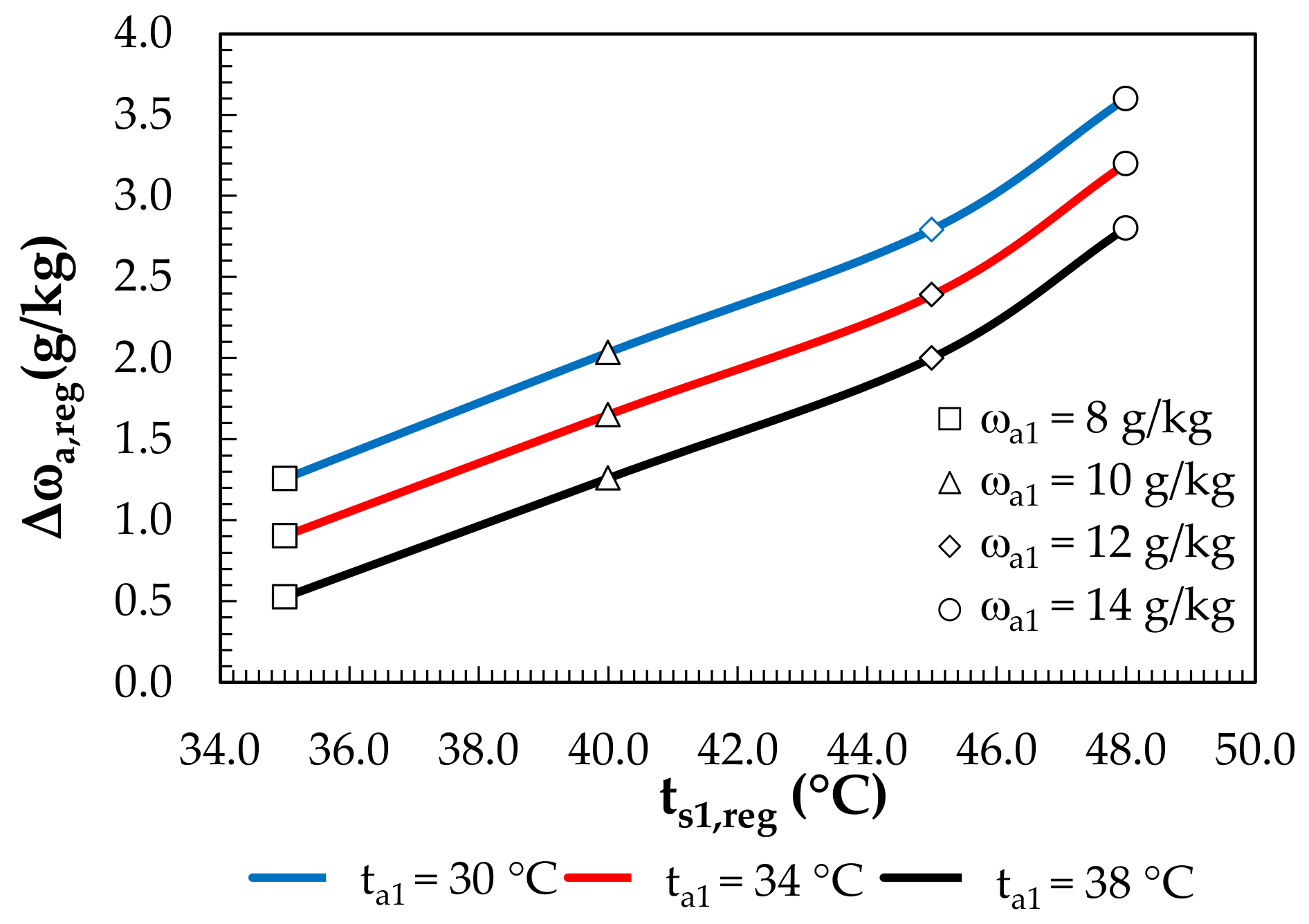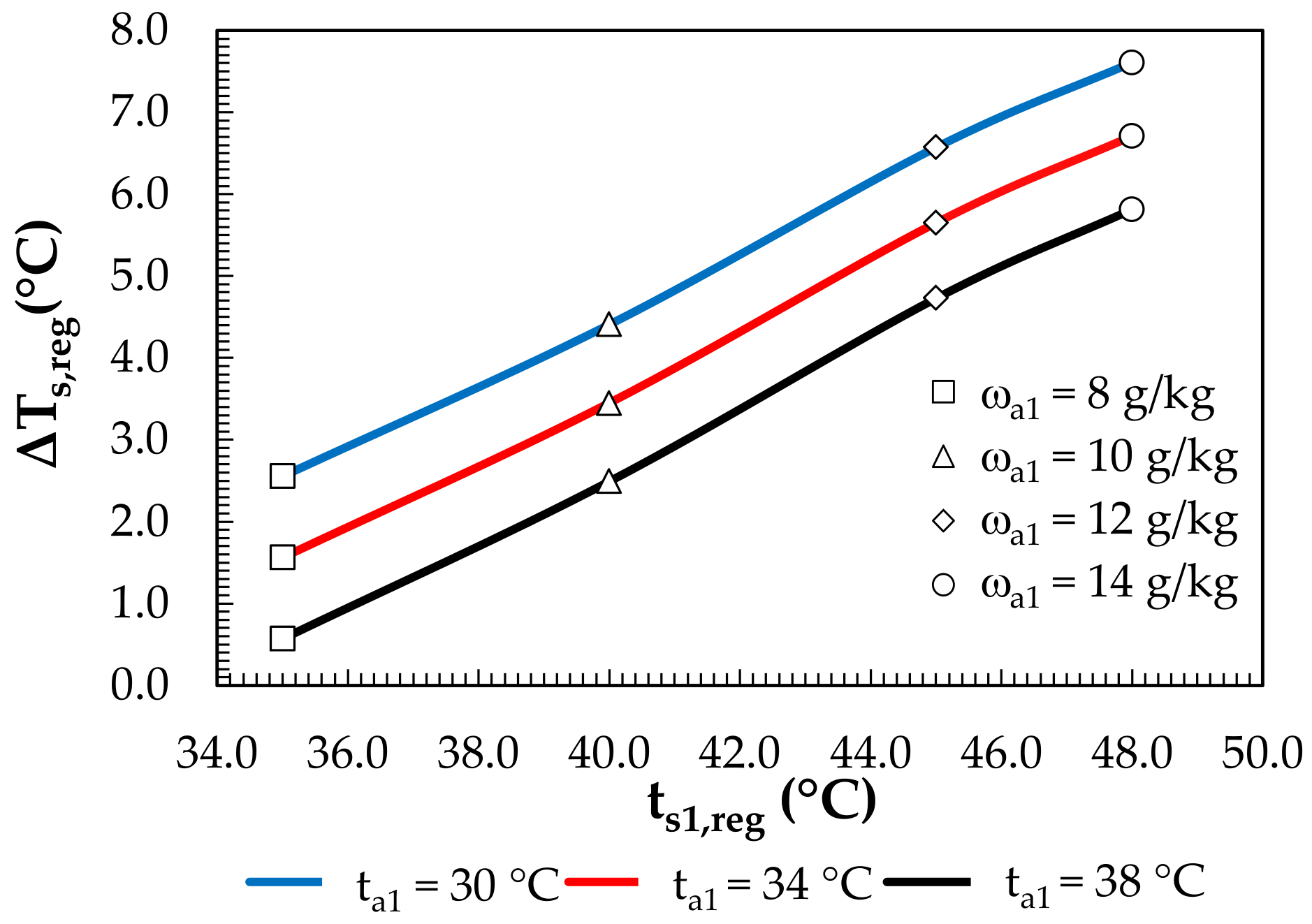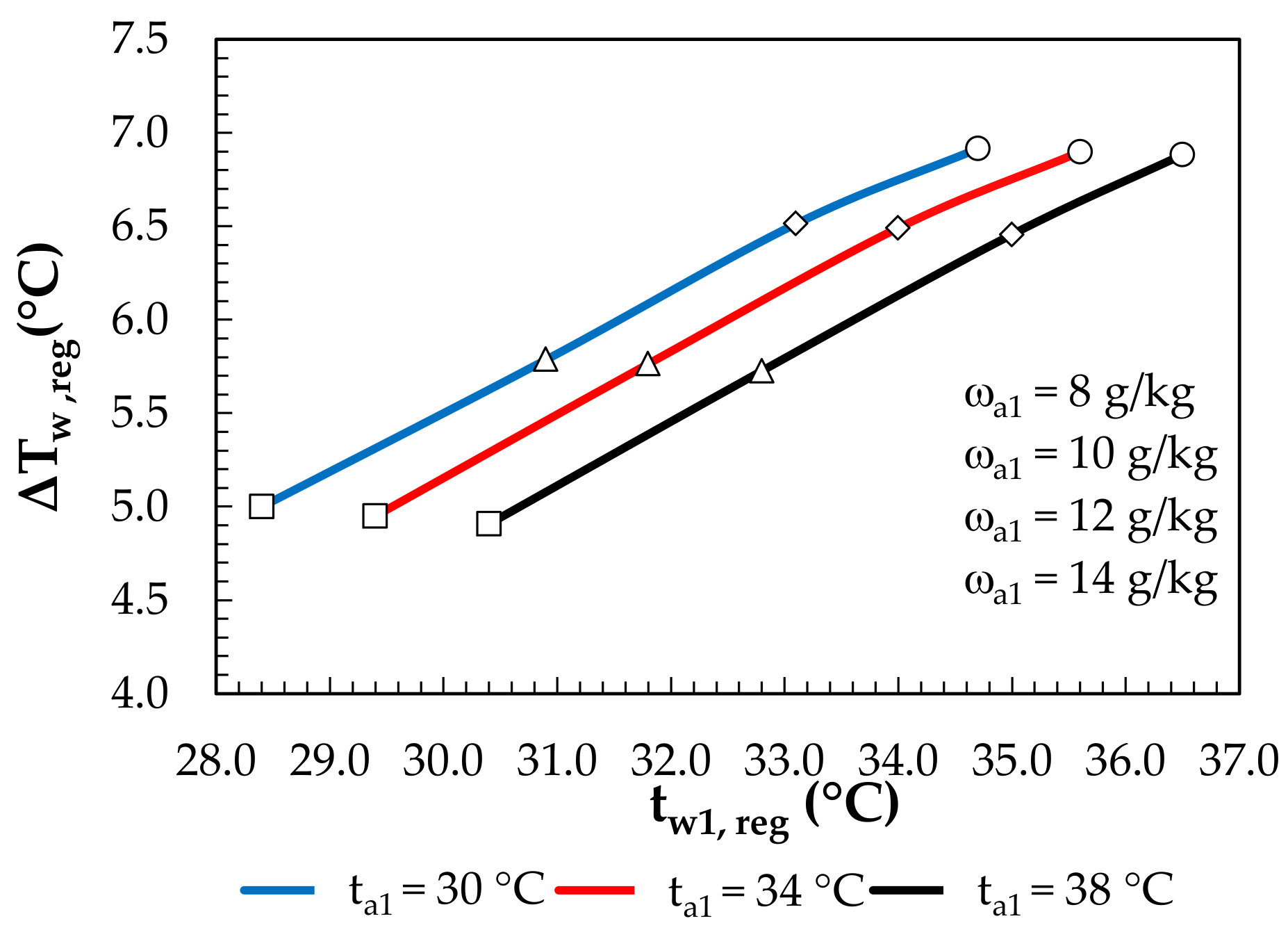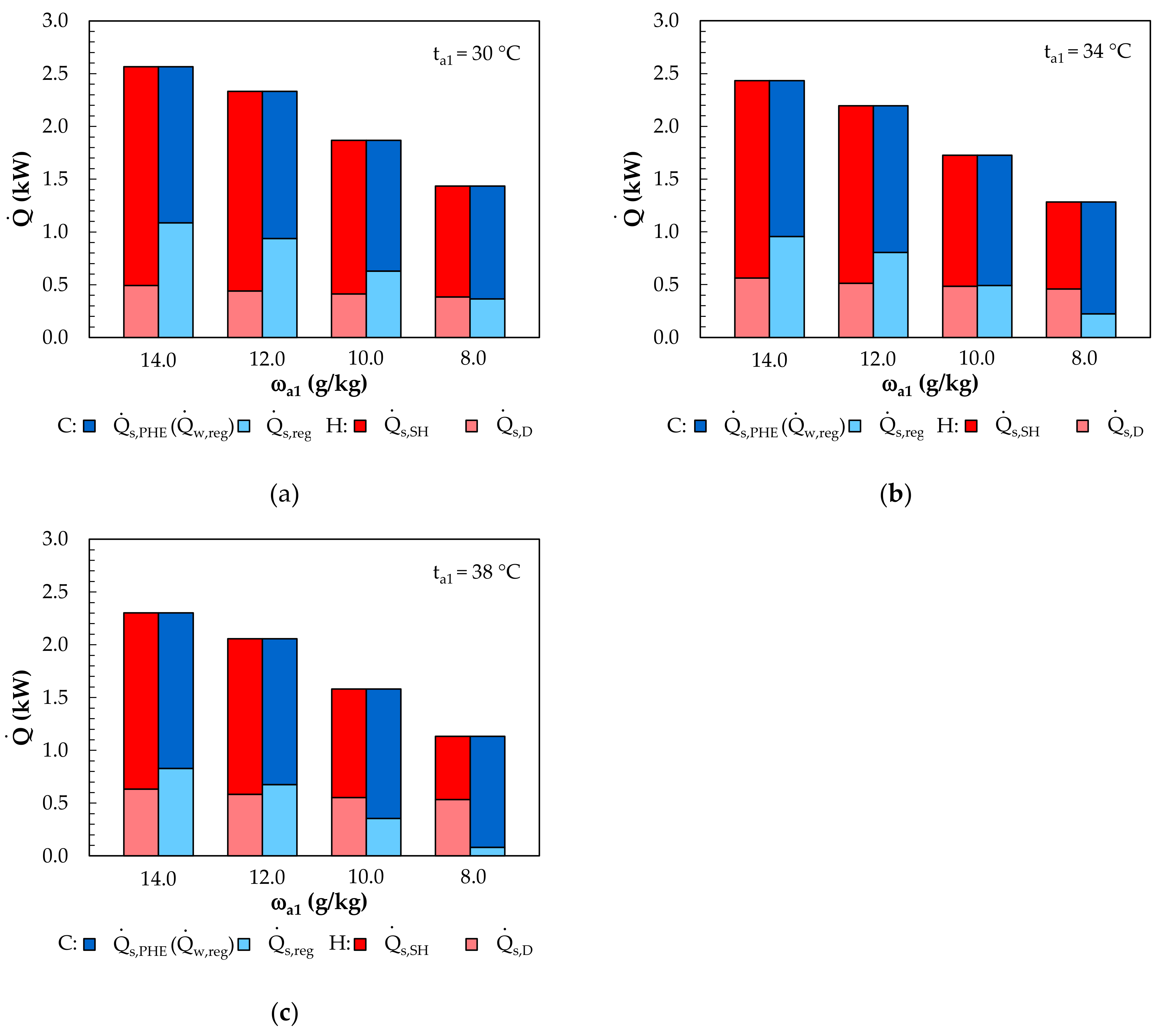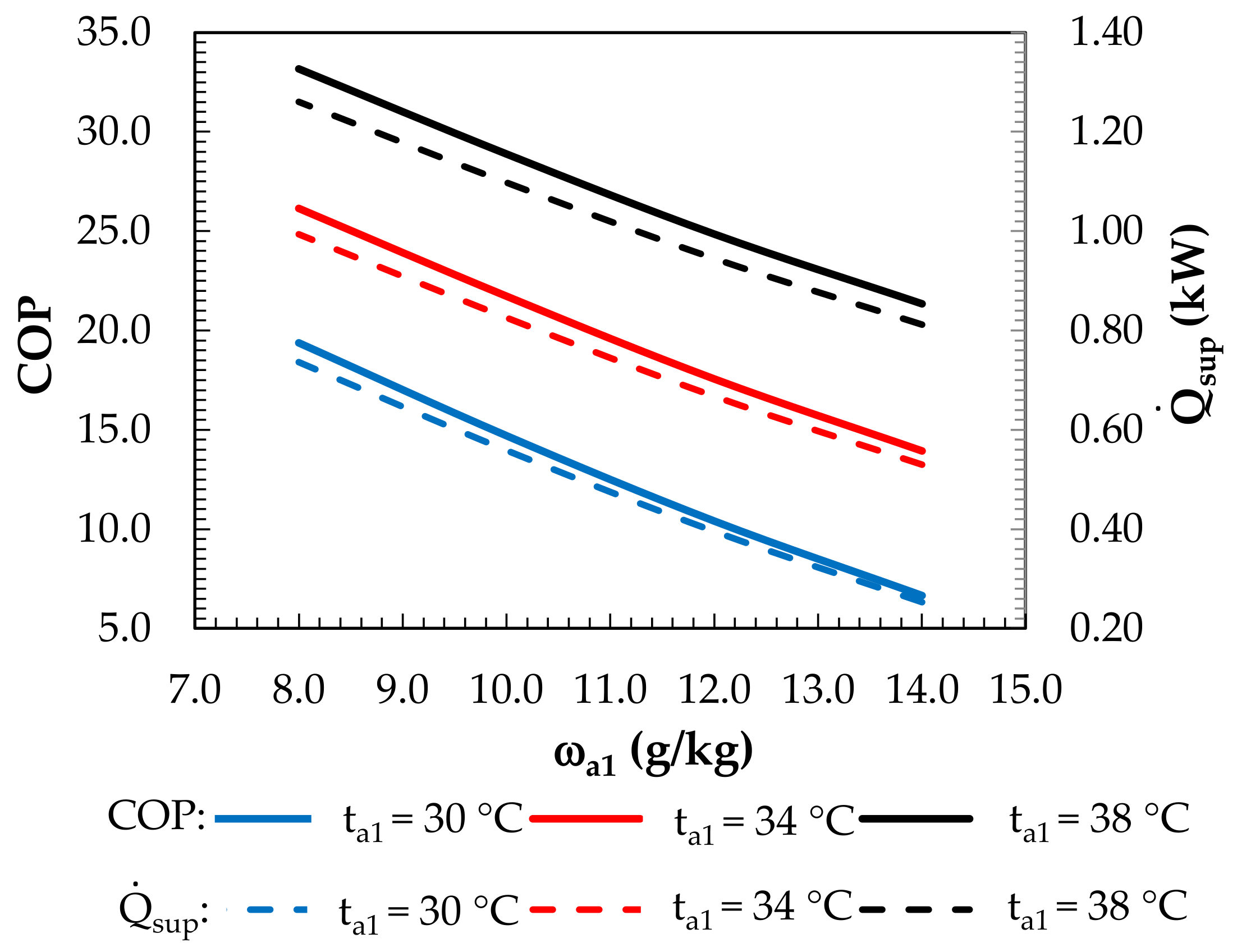1. Introduction
The increasing amount of time spent indoors is a growing concern in modern society. As the time of exposure to indoor pollutants is much longer than that of outdoor pollutants, indoor air quality plays an essential role in ensuring public health [
1,
2]. Moreover, the quality of the indoor environment affects the comfort and productivity of the occupants [
3]. On the other hand, buildings account for about one-third of the global energy consumption and one-quarter of CO
2 emissions [
4]. Therefore, the energy-saving potential of this sector has been increased worldwide by the improvement of the airtightness of the building envelope [
1,
5]. It should be emphasized that residential buildings are a key area of concern in efforts to reduce primary energy consumption [
5,
6]. However, these well-insulated and airtight buildings have to overcome the intensified issue of indoor air quality. Hence, it is of great importance for researchers to solve the problem of indoor air pollution in residential buildings. An effective way to improve the indoor air quality is to supply outdoor air through the ventilation system. As a result, indoor pollutants can be diluted [
7,
8]. As the main ventilation methods, mechanical and natural ventilation can be distinguished. However, mechanical ventilation can be considered as a reliable and organized method for meeting indoor air quality requirements [
7].
It should be mentioned that the supplied outdoor air has to be treated in terms of temperature and humidity in order to meet the thermal requirements for indoor air. As a result, additional energy consumption is necessary in order to supply sufficient fresh air to the room [
1]. This creates room for improvements effected by reducing the building energy use through novel heating, ventilation, and air conditioning (HVAC) solutions instead of the commonly used vapor compression air conditioning systems [
9].
Membrane-based HVAC systems can be considered a promising alternative to conventional systems. Hence, the membrane-based liquid desiccant air conditioning systems have been extensively investigated both experimentally and numerically due to the advantages of their high efficiency without liquid water condensation and capacity for regeneration using low-grade heat (solar energy) [
9,
10,
11]. In addition, a hollow-fiber-type membrane improves the dehumidification performance due to the higher packing density [
9,
12]. Peng and Cao proposed a novel hybrid-connected two-stage liquid dehumidification fresh air system [
13]. By combining two liquid desiccants (calcium chloride (CaCl
2) and lithium chloride (LiCl)), the deep dehumidification of outdoor fresh air was achieved using low-temperature regeneration heat sources, a with higher energy efficiency ratio (EER) and exergy efficiency. Englart and Rajski [
14] examined an outdoor air system that employs a cross-flow hollow-fiber membrane module. An improvement of 28–134% in the moisture removal rate was obtained in comparison to the conventional system. It was shown that the novel system offers the ability for proper outdoor air treatment in subtropical zones. Zhang et al. [
15] applied hollow-fiber membranes to a cross-flow dehumidifier. The performance of the liquid desiccant dehumidification system was numerically investigated based on a mathematical model, which was validated against experimental results. The authors concluded that the proposed system, using potassium formate (KCOOH) as a desiccant, could be more beneficial compared with other systems using conventional liquid desiccants.
On the other hand, experimental and numerical studies of the cooling performance of hollow-fiber-membrane evaporative coolers were carried out. These systems can offer an effective strategy for eliminating the water droplet carryover issue and bacterial growth that affect the indoor air quality. The applicability of a hollow-fiber-membrane evaporative cooler was investigated by Li et al. [
16]. The obtained outlet air temperature and relative humidity satisfied the thermal comfort requirements of hot and dry regions, such as Northwest China. Moreover, the possibility of using a membrane technique was investigated in [
17], resulting in satisfactory energy efficiency ratio indicators. Cui et al. [
18] performed in-depth numerical studies of the air treatment process considering the impacts of the inlet air conditions, the feed water velocity, and the geometric dimensions. The proposed membrane-based module achieved a wet bulb effectiveness of up to 0.73.
Moreover, hybrid dehumidification/evaporative cooling systems based on hollow-fiber modules have also been described. Jradi and Riffat [
19] employed a hollow-fiber-based core for evaporative cooling and liquid desiccant dehumidification. They concluded that the proposed system provides a promising alternative for the maintenance of thermal comfort and humidity control. Abdollahi et al. [
20] revealed the concept of a two-step membrane air conditioning system. It consists of a dehumidifier module and an evaporative cooling module connected in series. The thermal comfort of the occupants can be ensured with the use of the proposed system through the outdoor air treatment at temperatures up to 13.5 °C, with a humidity ratio of 12 g/kg.
Based on the conducted literature review, some gaps can be identified in the state of the art. To the best of our knowledge, no studies have been conducted in order to investigate the two-step membrane air conditioning system that combines a stage of dehumidification with a stage of evaporative cooling in parallel. Based on this explanation, the proposed fresh air processing system is novel in terms of its structural design and flow arrangement. Therefore, this approach can be identified as the main novelty of this study. As a further novelty, the comprehensive analysis is carried out using an experimentally validated model so as to evaluate the fresh air processing performance, where cross-flow hollow-fiber membrane modules are employed. The main objective of this study is to investigate the process of mixing the two separately processed outdoor airflows to provide sufficient fresh airflow to a conditioned room under the summer conditions of a temperate climate.
Combining all the above-mentioned issues together, here, an attempt is made to evaluate the applicability of a hybrid dehumidification/evaporative cooling system for the processing of fresh air as a unique alternative to the solutions available in the literature. This system has the following key features:
- -
An ability to provide fresh air for maintaining an acceptable indoor air quality in residential buildings.
- -
An ability to supply the pre-cooled and pre-dehumidified fresh air to meet the thermal requirements for indoor air.
- -
An ability to enabling the use of local air condition units based on circulated air alone to cover the internal cooling load.
3. Results and Discussion
The proposed model allows us to perform an analysis of the performance of the system on the supply side of the fresh air, as well as on the regeneration side of the solution. The membrane-based fresh air processing system was evaluated in terms of the parameters summarized in
Table 6. The range of the variation in the outdoor air temperature was from 30 °C to 38 °C and the humidity ratio was from 8 g/kg to 14 g/kg, as shown in
Figure 8a.
Figure 8a also shows the ranges of the air parameters obtained for the dehumidification, evaporative cooling, and air mixing processes.
Figure 8b shows the transformation of the air in a membrane-based fresh air processing system with the initial parameters t
a1 = 30 °C and
ωa1 = 10 g/kg (number 1 in
Figure 8b). Points 2
D and 2
EC indicate the air parameters after dehumidification and evaporative cooling, respectively. Point 3 is the supply air parameters obtained by mixing the two air streams. As can be seen, after mixing, the supply air flow partially moves within the summer comfort zone (
Figure 8a).
Figure 9 shows the modeling results for outdoor air of t
a1 = 30 °C and ω
a1 = 10 g/kg (point 1 of
Figure 8b) and a solution regeneration temperature of t
s1,reg = 40 °C.
The use of evaporative cooling over the analyzed range of outdoor air temperatures and humidity alone resulted in a satisfactory drop in the air temperature, with a corresponding, but not acceptable, increase in the moisture content (
Figure 8a). Carrying out the dehumidification process alone resulted in a slight decrease in the air temperature (at low outdoor air humidity ratios), as well as an increase in the air temperature (at high humidity ratios). Mixing the dehumidified and evaporatively cooled air streams allowed us to decrease the air temperature without a significant increase in the humidity ratio (
Figure 8a).
3.1. Effects of the Inlet Air Temperature and Humidity Ratio
The differences in the temperature and humidity ratio for dehumidification, evaporative cooling, and stream mixing were defined, respectively, as:
Figure 10 shows the change in the air parameters after dehumidification as a function of the humidity ratio and outside air temperature. Negative values indicate an increase and positive values indicate a decrease in the dehumidified air temperature (
Figure 10a). In
Figure 10b, negative values indicate air dehumidification.
The change in the humidity ratio ranged from 0.5 g/kg (for ta1 = 38 °C and at ωa1 = 8 g/kg) to 3.6 g/kg (for ta1 = 30 °C and at ωa1 = 14 g/kg). In the air dehumidification process, the highest temperature drop occurred at the lowest humidity ratio (ωa1 = 8 g/kg) and highest temperature (ta1 = 38 °C). This was due to the fact that the lowest solution temperature was obtained in the regeneration process for this humidity ratio. The higher the humidity ratio is, the higher the solution regeneration temperature required must be.
For the evaporative cooling (
Figure 11), the temperature drop ranged from 5.2°C (at t
a1 = 30 °C, ω
a1 = 14 g/kg) to 12.3 (at t
a1 = 38 °C, ω
a1 = 8 g/kg), while the increase in the humidity ratio ranged from 2.3 g/kg (at t
a1 = 30°C, ω
a1 = 14 g/kg) to 5.6 g/kg (at t
a1 = 38 °C, ω
a1 = 8 g/kg).
Mixing the streams (
Figure 12) of dehumidified and evaporatively cooled air slightly decreased the temperature drop compared to evaporative cooling. The temperature drop ranged from 1.9 °C to 9.7 °C, with a corresponding decrease in the air humidity from 5.6 g/kg to 2.5 g/kg (at t
a1 = 38°C, ω
a1 = 8 g/kg). For t
a1 = 30 °C and ω
a1 = 14 g/kg, there was slight air dehumidification of Δω = −0.6 g/kg.
3.2. Analysis of the Regeneration System’s Operation
The inlet solution temperature range for the regeneration was from 35 °C at a regeneration air humidity ratio of 8 g/kg to 48 °C at 14 g/kg. In the regeneration air, there was an increase in the humidity ratio from 0.5 g/kg (for t
a1 = 38 °C, ω
a1 = 8 g/kg) to 3.6 g/kg (for t
a1 = 30 °C, ω
a1 = 14 g/kg), which indicates the effective regeneration of the solution (
Figure 13).
The drop in the solution temperature during regeneration is shown in
Figure 14. It ranged from 0.6 °C to 7.6 °C. A further decrease in the solution temperature was obtained in the PHE, whereas the preheated water in the PHE was cooled in MEC. The drop in the water temperature obtained for the MEC is shown in
Figure 15. The drop in the water temperature ranged from 4.9 °C to 6.9 °C and was enough to supply the PHE.
3.3. Heat and Cooling Capacity of the Regeneration and COP of the System
The heat and cooling capacity demands of the solution loop are shown in
Figure 16. The system analyzed assumes that the heating of the LiCl solution is achieved with solar collectors. The heat capacity required for heating the solution from the solar system,
, depended on the outdoor air parameters and ranged from 0.6 kW (t
a1 = 38, ω
a1 = 8 g/kg) to 2.07 kW (t
a1 = 30, ω
a1 = 14 g/kg). The higher the humidity ratio in the regeneration air is, the higher the temperature that the solution is heated to before regeneration must be. This is due to the need to ensure an adequate difference in the moisture content between the regeneration air and the point of the regeneration potential on the LiCl equilibrium curve. In addition, the appropriate regeneration of the solution must allow for the following condition to be achieved: Δω
a,reg = −Δω
a2,D.
The cooling of the solution was carried out in an external system. The highest cooling capacity occurred at ωa1 = 14 g/kg and was in the range of = 1.47–1.48 kW, and the lowest, at ωa1 = 8 g/kg, was in the range of = 1.05–1.07 kW. A higher solution temperature with a higher moisture content resulted in a higher water temperature at the PHE outlet and, thus, a higher inlet temperature for the MEC.
The effects of the outdoor air parameters on the COP of the system and the cooling capacity of the supply air are shown in
Figure 17. The highest COP and
values were obtained at the lowest outdoor air humidity ratio and at a particular outdoor air temperature. In such conditions, the highest drop in the air temperature in the MEC was obtained, and the inlet temperature of the solution for the dehumidifier was the lowest, resulting in the lowest air mixture temperatures and, thus, the highest
values.
